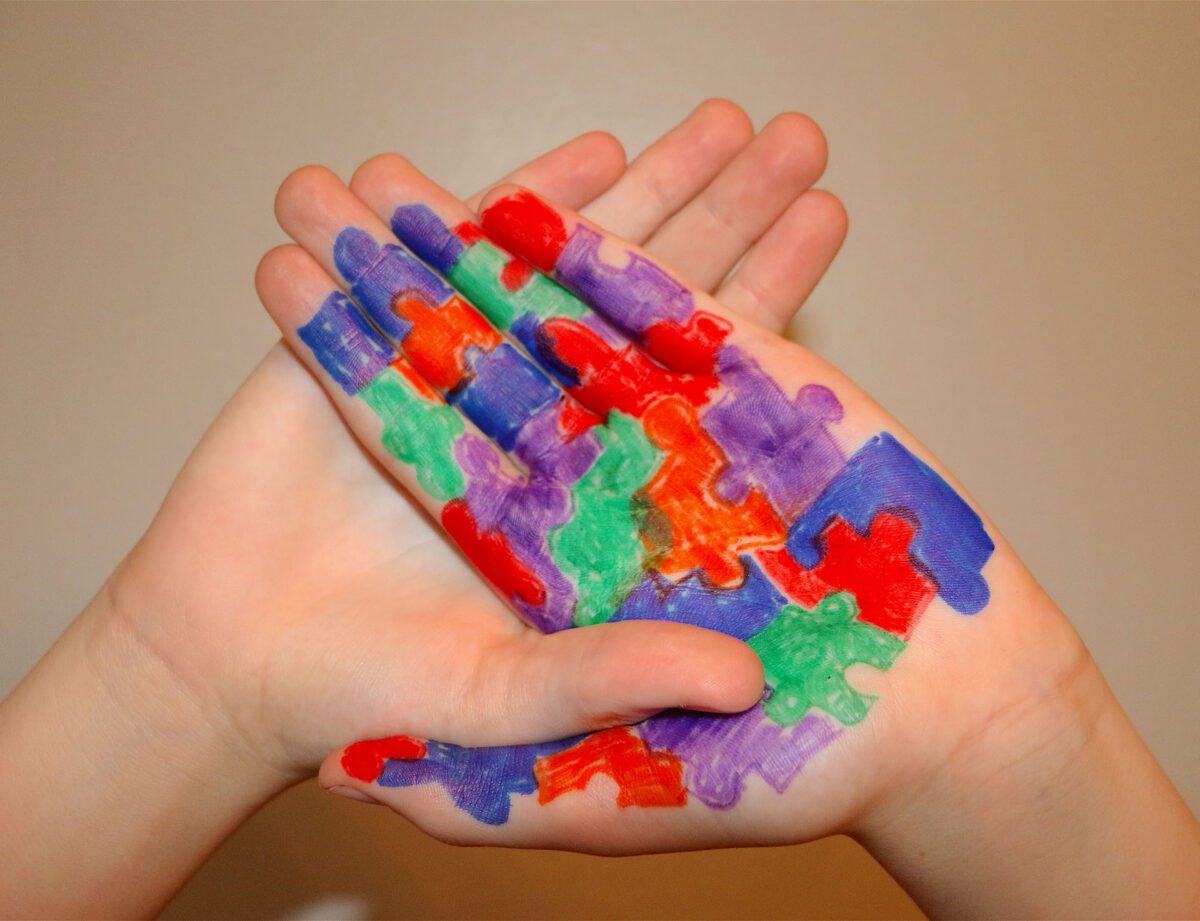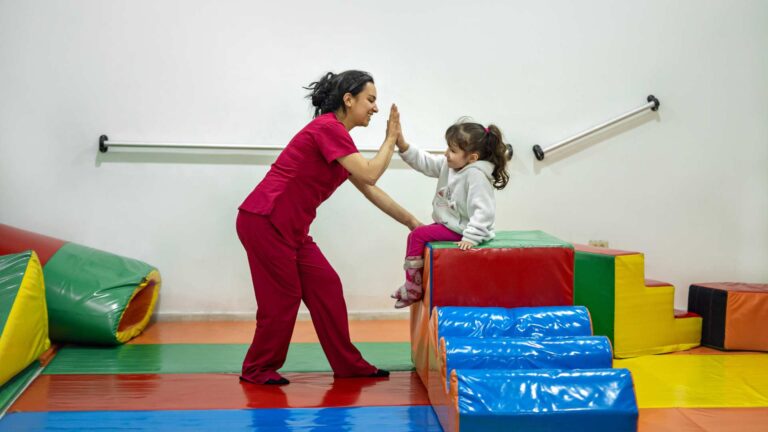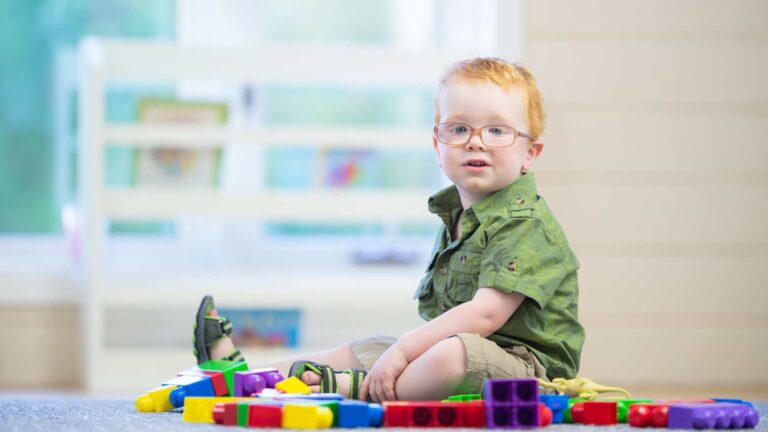Finding the most beneficial autism therapy for your child might not be a decision you expected to make as a parent. Texas ABA Centers is here to help. You may have heard the term “ABA therapy” during your research and wanted clarification about its methods and goals. The purpose of the following – in addition to defining ABA therapy (short for Applied Behavior Analysis) – is to introduce its history and explore why it is considered the gold standard for autism care.
ABA therapy is backed by decades of research, recognized by the FDA, and often covered by insurance. It is a verified, tried-and-true way to help your child develop and learn useful skills for navigating daily life.
Texas ABA Centers focuses on autism spectrum disorder (ASD) awareness and the community by informing parents and caretakers of the benefits of ABA and what the therapy involves. If you know of any parents struggling with their child’s ASD diagnosis, we encourage you to share this link. We’re always happy to answer any questions.
Defining ABA Therapy: The History
ABA therapy is a treatment approach for individuals with autism that focuses on managing challenging behavior through positive reinforcement.
In the 60s and 70s, studies were conducted demonstrating the effectiveness of ABA therapy in improving the behavior and communication skills of children with autism.
Through further study and the destigmatizing of autism, modern ABA has evolved into a more compassionate and data-driven therapeutic method. It is now administered and overseen by professionals trained in the principles of behavioral psychology.
Today, ABA therapy has become one of the most widely used and researched treatments for autism. It has been endorsed by many professional organizations, including the American Psychological Association and the American Academy of Pediatrics, as a scientifically validated approach to treating autism.
Defining ABA Therapy: Who Administers It?
Registered Behavior Technicians (RBTs) and Board Certified Behavior Analysts (BCBAs) are the two essential professionals administering ABA for those on the spectrum.
The BCBA is responsible for creating and updating the therapy plans for those on the spectrum. The medical professionals in charge of implementing this therapy plan are the RBTs. They work in person with kids on the spectrum and teach them important life skills while gathering data for the RBT to analyze.
To become an RBT, individuals must complete a 40-hour training program and pass a certification exam. At Texas ABA Centers, they also receive additional in-house training that involves fieldwork and supervision by a BCBA. RBTs and BCBAs work as a team to provide comprehensive ABA therapy that addresses the unique needs of individuals with autism.
A BCBA is a professional specializing in applying behavior analysis to improve the lives of individuals with behavioral challenges. They may work in various settings, including schools, clinics, and homes, and they typically work with individuals with ASD, developmental disabilities, or other behavioral disorders.
To become a BCBA, individuals must first earn a graduate degree in behavior analysis, psychology, or a related field. They must then complete a specified number of supervised experience hours in behavior analysis, pass a certification exam, and adhere to ethical standards set by the Behavior Analyst Certification Board (BACB). A BCBA certification requires continuing education and ongoing adherence to ethical standards.
Defining ABA Therapy: What’s It Like?
ABA therapy can only begin once your child has obtained an autism diagnosis. Depending on the individual’s needs, it is typically conducted one-on-one at home, in the community, or at a clinic, depending on the individual’s needs. The strength of ABA is that it is personalized. Each child on the spectrum has unique strengths and weaknesses, just like their neurotypical counterparts.
During a session, the therapist will work with the individual to identify specific behaviors or skills that need to be improved. The therapist will then use positive reinforcement techniques to encourage the individual to engage in desired behaviors or learn new skills.
For example, if the individual is nonverbal, the therapist may use visual aids or sign language to communicate. The therapist may also use rewards or praise to reinforce positive behaviors, such as following instructions or completing a task. There are many behavioral techniques that BCBAs and RBTs can employ to help your child maximize their potential; these include but are not limited to:
- Naturalistic Teaching: Those on the spectrum are sometimes uncomfortable in unfamiliar settings. Learning in the home or implementing therapy during the routine of a neurodivergent child helps them take the lead and get comfortable sooner.
- Token Economies: This strategy relies on the principles of positive reinforcement. Rewards, such as a favorite food or time with a favorite toy, are offered in exchange for completed tasks. This technique ensures the replication of healthy behaviors in the future.
- Contingent Observation: In group settings, a child can see someone else complete a task correctly, receive praise, and repeat the behavior themselves.
- Play Therapy: Implementing lessons and goals during the standard course of play, while on the playground or with toys, can be extremely helpful at teaching skills without kids realizing they are learning anything.
- Discrete Trial Training (DTT): The easiest way to learn something is by breaking it down into its essentials. This method takes simple tasks and teaches them in manageable pieces over time.
ABA therapy is a data-driven process. After determining the goals are set, an RBT takes data regarding your child’s progress for the BCBA to analyze. Plans are revised every six months and are very adaptable.
Defining ABA Therapy: How Does It Help?
One of the primary skills that ABA therapy teaches is communication. Kids on the spectrum struggle to understand the emotions of others and express their own, which can lead to behavior that seems maladaptive rather than just misunderstood. ABA therapy can teach children to express themselves using language, signs, or picture communication systems. Socialization skills like initiating conversations, taking turns, maintaining eye contact, responding to others, making friends, and respecting boundaries are only some that ABA can impart.
Another vital set of skills is daily management and self-care. Hygiene, toileting, dressing oneself, eating, paying a bill, and taking public transportation are goals that demonstrate independence.
ABA therapy is not just beneficial for children with ASD; it can also be helpful for families. Parents and caregivers can learn techniques for reinforcing positive behaviors and reducing negative behaviors at home. ABA therapy can also give families a greater understanding of their child’s behavior and needs, leading to improved communication and a stronger relationship.
Across every category, whether socialization, communication, or academic skills, ABA is the only therapy guaranteed to help your loved ones reach their full potential and live joyful lives.
Texas ABA Centers & ABA Therapy
A goal many have for their children, although we love and help them, is to aid them in becoming fully realized, self-reliant adults. With the help of Texas ABA Centers, ABA therapy can go a long way to fulfilling that hope. No matter what the challenges are, we can help. Our highly trained ABA experts will provide compassionate, individualized, effective therapy to your loved one on the spectrum.
Cal (877) 771-5725 for a free consultation, or contact us through our website, and let us help make a difference together.









